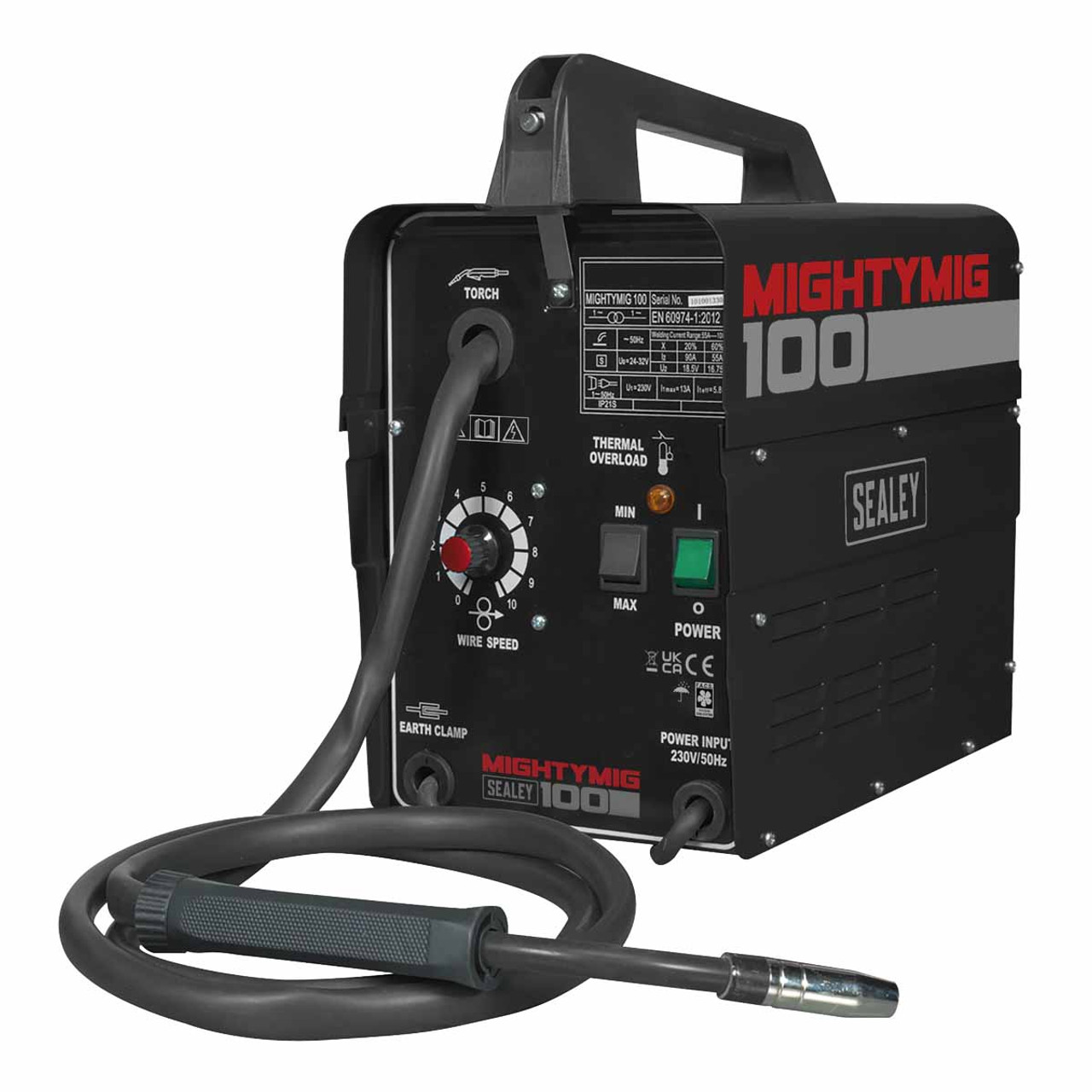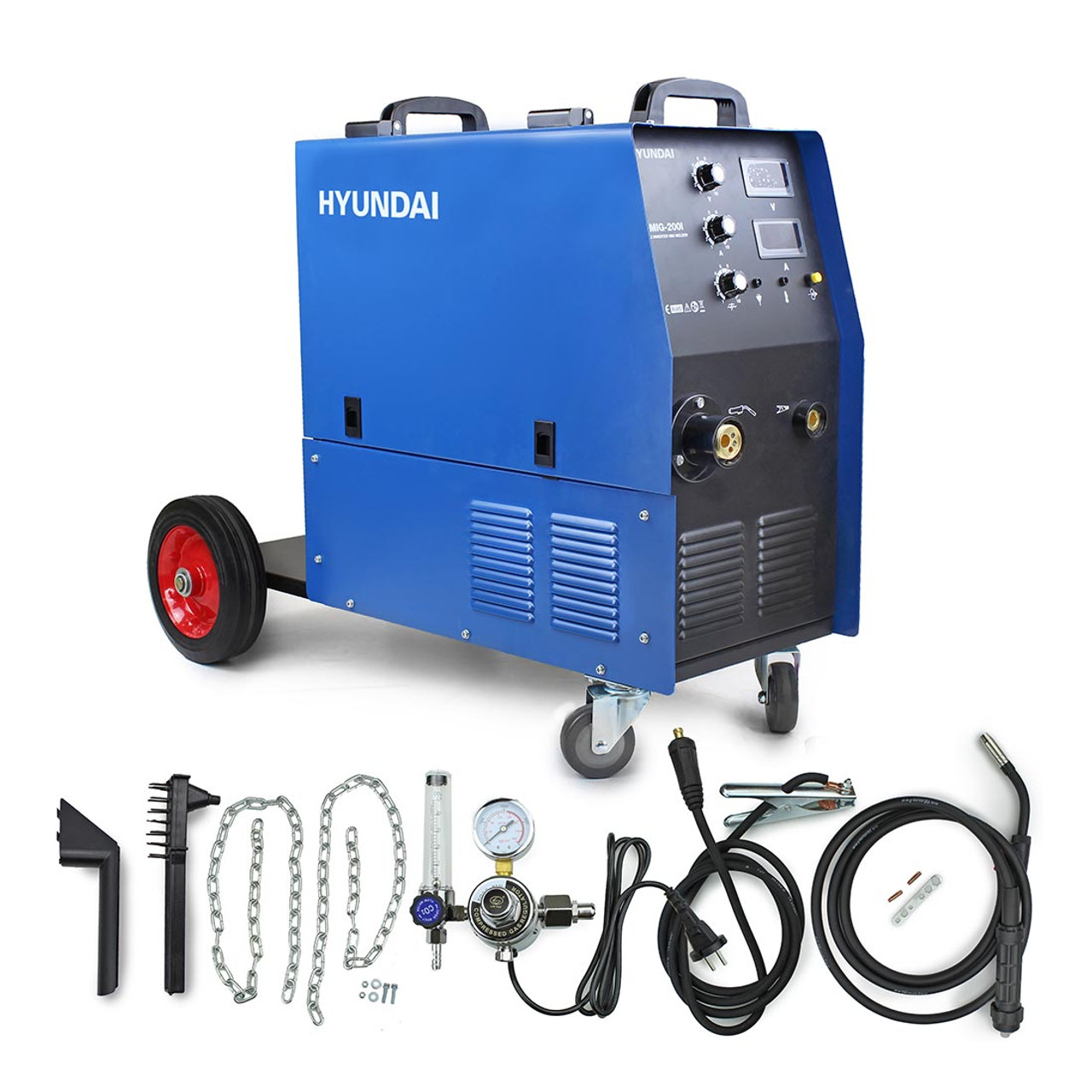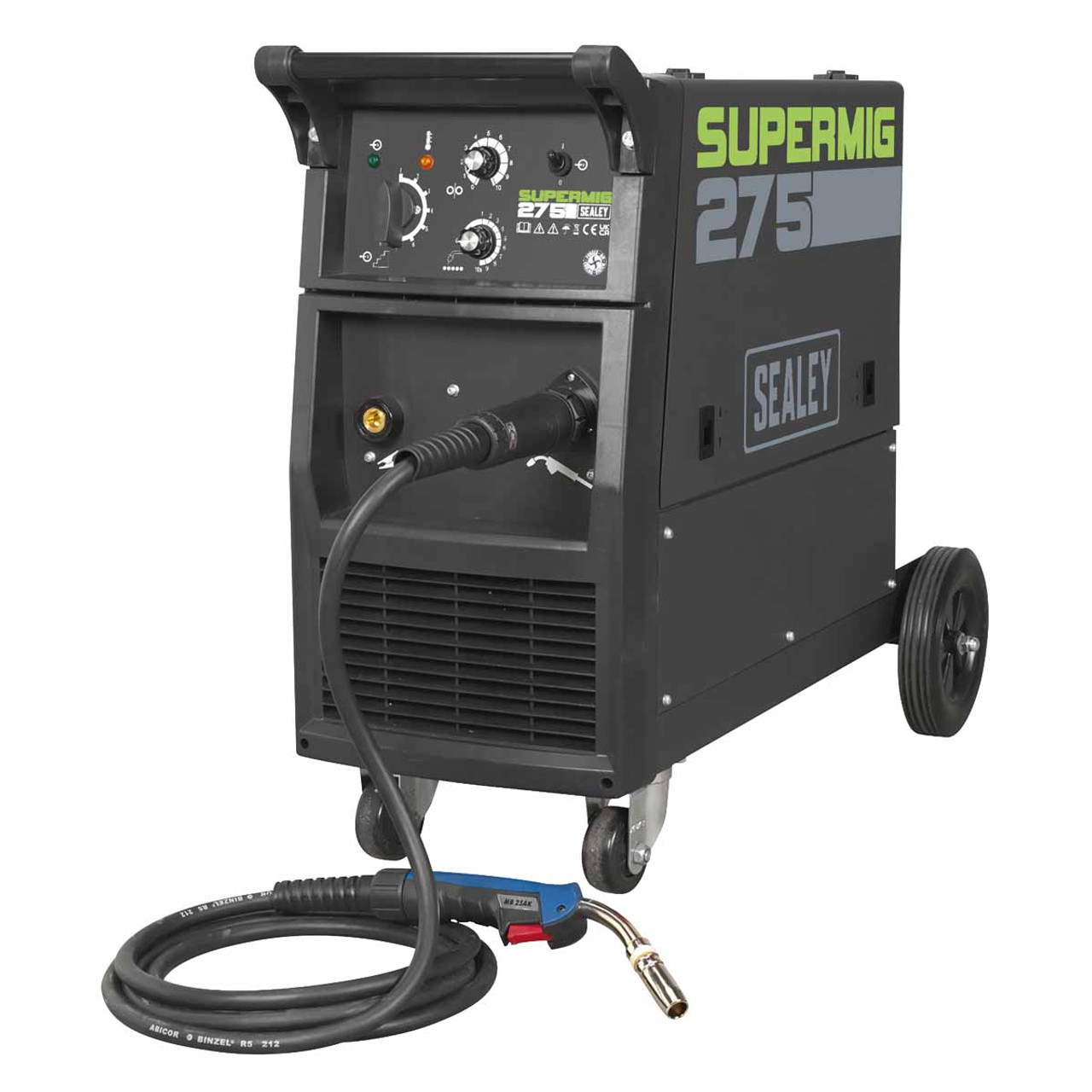Top MIG Welders: Beginner Budget to Advanced Picks

MIG welding or Metal Inert Gas welding, is a popular and versatile welding process known for its ease of use and efficiency. Whether you’re a beginner on a budget or an experienced welder looking for advanced features, the market offers a range of MIG welders to suit different needs. In this guide, we’ll explore top picks across various budget ranges, highlighting features that cater to beginners, hobbyists, and professionals alike. From user-friendly interfaces to advanced technology, these MIG welders are sure to meet the demands of welding projects at different skill levels.
What is a MIG Welder?
A MIG welder, short for Metal Inert Gas welder or Gas Metal Arc Welding (GMAW), is a welding machine designed for joining metal pieces. It utilises a consumable electrode wire that melts, serving as filler material during the welding process. To shield the molten weld pool from atmospheric impurities, a shielding gas, often inert gases like argon or helium, is released through the welding gun.
MIG welding is renowned for its versatility, ease of use, and efficiency in various applications, including automotive repair, fabrication, and construction.
How do MIG Welders Work?
MIG welding is a process that uses a continuously fed wire electrode to join two pieces of metal. It is a popular welding method due to its versatility, speed, and ease of use. Here’s a basic overview of how MIG welders work:
- Power Source: MIG welders operate with either constant voltage or constant current power supplies, providing the necessary energy for the welding arc.
- Wire Feeder: A mounted spool of consumable wire electrode serves as the filler material, with the wire feeder controlling its advance for a stable welding arc.
- Welding Gun: This handheld device, connected to the MIG welder, is triggered by the welder to initiate the welding process. It includes a nozzle for directing shielding gas to protect the weld pool.
- Shielding Gas: Typically a mix of argon and carbon dioxide or argon and helium, shielding gas prevents atmospheric contamination, with the choice depending on the application and metal type.
- Welding Circuit: Triggering the gun completes a circuit, allowing current to flow through the wire electrode, creating an electric arc that generates intense heat.
- Arc and Weld Pool Formation: The arc melts the wire and workpiece surfaces, forming a molten pool of metal that solidifies to create a strong bond.
- Welding Parameters: MIG welders allow adjustment of parameters such as voltage, wire feed speed, and shielding gas flow rate, customizable based on metal thickness and type.
Always remember to wear appropriate safety gear, including a welding helmet, gloves, and protective clothing, when using a MIG welder. It’s also a good idea to take a welding safety course if you are new to welding.
9 Tips on What MIG Welder to Buy?
Choosing a MIG welder depends on your specific needs, budget, and the type of welding projects you plan to undertake. Here are some considerations to help you decide:
- Power Requirements: Ensure that the MIG welder you choose matches the power supply available in your workspace. Common household models run on 120V, while more powerful units may require 240V.
- Welding Thickness: Consider the thickness of the materials you’ll be welding. Different MIG welders have varying amperage outputs, and higher amperage is generally needed for thicker materials.
- Duty Cycle: The duty cycle indicates how long the welder can operate continuously before needing to cool down. For more extended welding sessions, choose a machine with a higher duty cycle.
- Wire Feed Speed and Voltage Control: Look for a MIG welder with adjustable wire feed speed and voltage settings. This allows you to fine-tune the welding parameters for different materials and thicknesses.
- Portability: If you need to move the welder frequently, consider a portable and lightweight model. Some units come with built-in handles or wheels for easy transportation.
- Gas or Flux-Core: Decide whether you want a MIG welder that uses shielding gas or flux-core wire. Shielding gas provides cleaner welds, while flux-core welding is more suitable for outdoor or windy conditions.
- Budget: Set a budget based on your needs and the features you require. While it’s essential to stick to your budget, also consider the long-term value and reliability of the welder.
- Extras and Accessories: Check if the MIG welder comes with additional accessories like a regulator, welding mask, or extra nozzles. Some packages may include more comprehensive starter kits.
- Brand and Reviews: Research reputable brands and read user reviews to get an idea of the reliability and performance of specific models.
MIG Welders from Beginner Budget to Advanced Picks
Entry-Level MIG Welder
An entry-level MIG welder is tailored for beginners, featuring a compact and user-friendly design with straightforward controls. It is well-suited for light-duty projects and small repairs, thanks to its lower amperage range, which makes it particularly effective for welding thin metals.
- Amperage Range: Typically around 70-140 amps.
- Voltage Settings: Limited, often with basic voltage control.
- Wire Feed Speed: Basic adjustment for different welding speeds.
- Duty Cycle: Moderate, suitable for light welding tasks.
- Wire Diameter Compatibility: Commonly handles 0.023 to 0.035-inch ( 0.58mm- 0.89mm) wires.
- Material Thickness: Suitable for thin to medium thickness metals.
Sealey MIGHTYMIG100 Professional No-Gas MIG Welder 100Amp 230V
The Sealey MIGHTYMIG100 Professional No-Gas MIG Welder 100Amp 230V is part of Sealeys MIGHTYMIG® range. This compact no-gas welder offers excellent performance at an extremely competitive price and comes supplied with comfort grip non-live torch, 1.8m earth cable, 0.45kg flux cored wire and 1mm contact tip. Suitable for no-gas operation only. For use with flux cored wire.
Mid-Range MIG Welder
A mid-range MIG welder blends affordability with advanced features. It boasts an increased amperage range for versatile material welding and provides enhanced control options for specific welding needs. Its robust build is well-suited for moderate to heavy-duty tasks, and additional features like a digital display ensure precise adjustments for optimal performance.
- Amperage Range: Extended range, approximately 140-220 amps.
- Voltage Settings: More precise control with multiple voltage options.
- Wire Feed Speed: Adjustable with finer increments for better customization.
- Duty Cycle: Improved, providing more continuous welding time.
- Wire Diameter Compatibility: Accommodates a range of wire diameters, including 0.023 to 0.045 inches ( 0.58mm- 1.14mm)
- Material Thickness: Versatile, capable of welding medium to thicker materials.
Draper 71095 Gas/Gasless Turbo MIG Welder 160A 230V
This versatile welding machine offers continuous welding current and thermal overload protection for reliable performance. It comes complete with essential accessories, including a 1.5M earth clamp, a 2.5M welding torch, a welding brush, a welding mask, and a 1kg spool of solid core welding wire. With an output amperage range of 60 to 160A, this multi-purpose machine is well-suited for various welding applications, providing flexibility and convenience for users.

Advanced MIG Welder
Designed for experienced welders, this advanced MIG welder features a high amperage range for thick materials and demanding projects. With advanced controls and enhanced durability, it offers customizable settings for precise welding. Its compatibility with various wire types adds flexibility to accommodate diverse welding needs.
- Amperage Range: High, exceeding 220 amps for heavy-duty applications.
- Voltage Settings: Advanced voltage control with precise adjustments.
- Wire Feed Speed: Fine-tuned settings for optimal welding results.
- Duty Cycle: High duty cycle, suitable for prolonged and intensive welding.
- Wire Diameter Compatibility: Accommodates various wire diameters, including flux-cored wires.
- Material Thickness: Capable of handling thick materials with ease.
Hyundai HYMIG-200I Pro Series MIG Welder 200 Amp 230V
The HYMIG-200I is a heavy duty and incredibly versatile single phase MIG/MMA welder from Hyundai. The HYMIG-200I is capable of welding mild steel from 0.8mm to 8mm. Weighing only 48kg, the HYMIG-200I is easy to transport thanks to its mounted handles on the heavy duty steel case with powder coated finish for extra corrosion resistance and trolley wheels with Gas bottle holder at rear. Accessories include MIG welding torch with 3m cable, earth clamp with 2.5m cable and brush.
Industrial-Grade MIG Welder
Crafted for heavy-duty industrial applications, this MIG welder boasts a high amperage and duty cycle, making it proficient for prolonged welding tasks. It incorporates advanced technology for enhanced arc control and superior weld quality. Built with durable materials and components, it can withstand challenging environments. Additionally, it often comes equipped with features such as synergic welding for optimised performance in industrial settings.
- Amperage Range: Very high, often exceeding 250 amps.
- Voltage Settings: Advanced and customizable for specific welding processes.
- Wire Feed Speed: Precision control for different applications.
- Duty Cycle: Extremely high, designed for continuous and heavy-duty use.
- Wire Diameter Compatibility: Accommodates a wide range of wire types and sizes.
- Material Thickness: Suited for welding thick sections in industrial settings.
Sealey SUPERMIG275 Professional MIG Welder 270Amp 230V with Binzel Euro Torch
A powerful 270 Amp maximum performance, excels in continuous welding on car panel thickness materials. Its Forced-Air Cooling System ensures a high duty cycle, while the Binzel non-live Euro torch minimises accidental arcing and provides a comfortable grip for a steady weld bead. Capable of welding stainless steel and aluminium, it includes essential accessories like an industrial twin gauge gas regulator, a 0.8mm contact tip, and a gas cup, making it a versatile and efficient solution for various welding applications.
FAQ
Are MIG Welders Ac or Dc?
MIG (Metal Inert Gas) welders are versatile machines that can operate on either AC (alternating current) or DC (direct current), depending on the welding application and materials involved. DC power is commonly used in MIG welding, offering options such as DC electrode positive (DCEP) for deeper penetration on thicker materials and DC electrode negative (DCEN) for welding thinner materials. On the other hand, some MIG welders are designed to work with AC power, particularly beneficial when welding aluminium due to its ability to prevent arc blow and provide effective cleaning action. Ultimately, the choice between AC and DC MIG welding depends on the specific requirements of the welding project and the materials being joined.
Why do MIG Welders need Gas?
MIG Welders need gas for:
- Oxidation Prevention: Shielding gas protects the weld from oxygen, preventing oxidation and defects.
- Arc Stabilization: The gas stabilises the electric arc, ensuring better control and consistent welds.
- Heat Control: It helps control heat input, preventing issues like overheating, rapid cooling, distortion, and cracking.
- Improved Appearance: Shielding gas contributes to a cleaner, aesthetically pleasing weld by reducing spatter and discoloration.
- Material Compatibility: Different gases are used based on the material being welded (e.g., CO2, Ar, or mixtures) for optimal results.
What is the difference between a TIG Welder and a MIG Welder?
TIG Welder (Tungsten Inert Gas) and MIG Welder (Metal Inert Gas) are two distinct processes with notable differences. TIG welding employs a non-consumable tungsten electrode and a separate filler rod, demanding precise control over the welding arc and filler material. It is commonly used for precision welding of thin materials in industries like aerospace and automotive. In contrast, MIG welding utilises a consumable wire electrode fed through a welding gun, providing a more forgiving process suitable for industrial applications, particularly when welding thicker materials in automotive manufacturing and construction. While TIG welding yields high-quality, aesthetically pleasing welds with minimal spatter, MIG welding is often considered more beginner-friendly due to its efficiency and ease of use. The choice between TIG welding and MIG welding depends on the specific requirements of the project and the skill level of the welder.
What are the Common MIG Welding Issues and their Solutions?
- Incomplete Penetration: Address this by raising the wire feed and decreasing the wire protrusion from the MIG gun.
- Excessive Penetration: Resolve by reducing the size of the gap you are attempting to fill.
- Incomplete Fusion: Prevent by ensuring the electrode wire does not advance ahead of the weld pool.
- Whiskers: Rectify by maintaining the wire at the forefront of the weld, reducing the size of the weld pool, and adjusting the wire protrusion from the MIG gun.
At Toolden, we offer a wide range of MIG Welders to suit a wide range of domestic and commercial applications.
Unsure of which MIG Welder to go for? Need a bit of help with your order? Our new help centre has a wide range of helpful articles and guides!
If you have any additional queries, please do not hesitate to contact us at 01358 726719 or by email at
admin@toolden.co.uk



